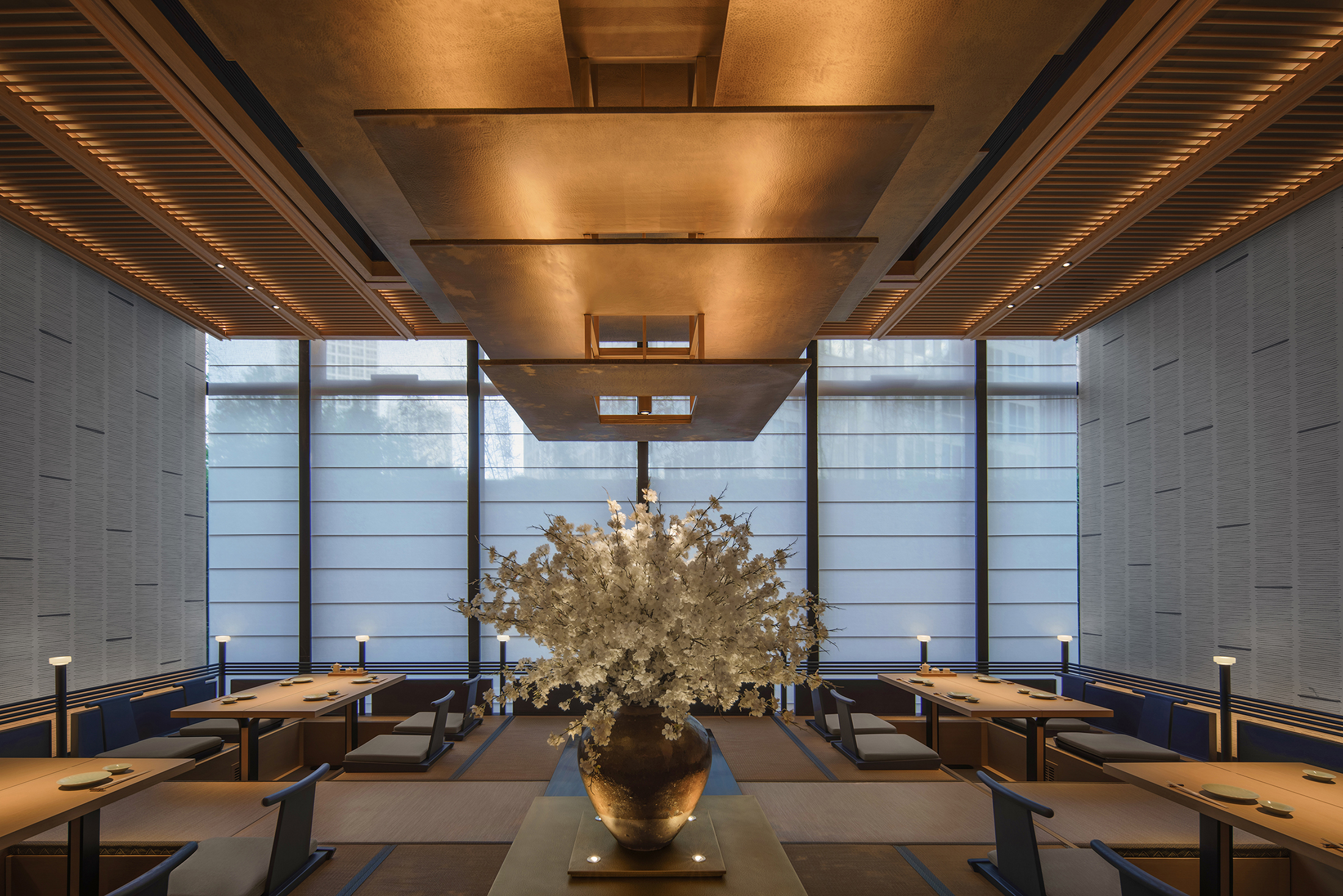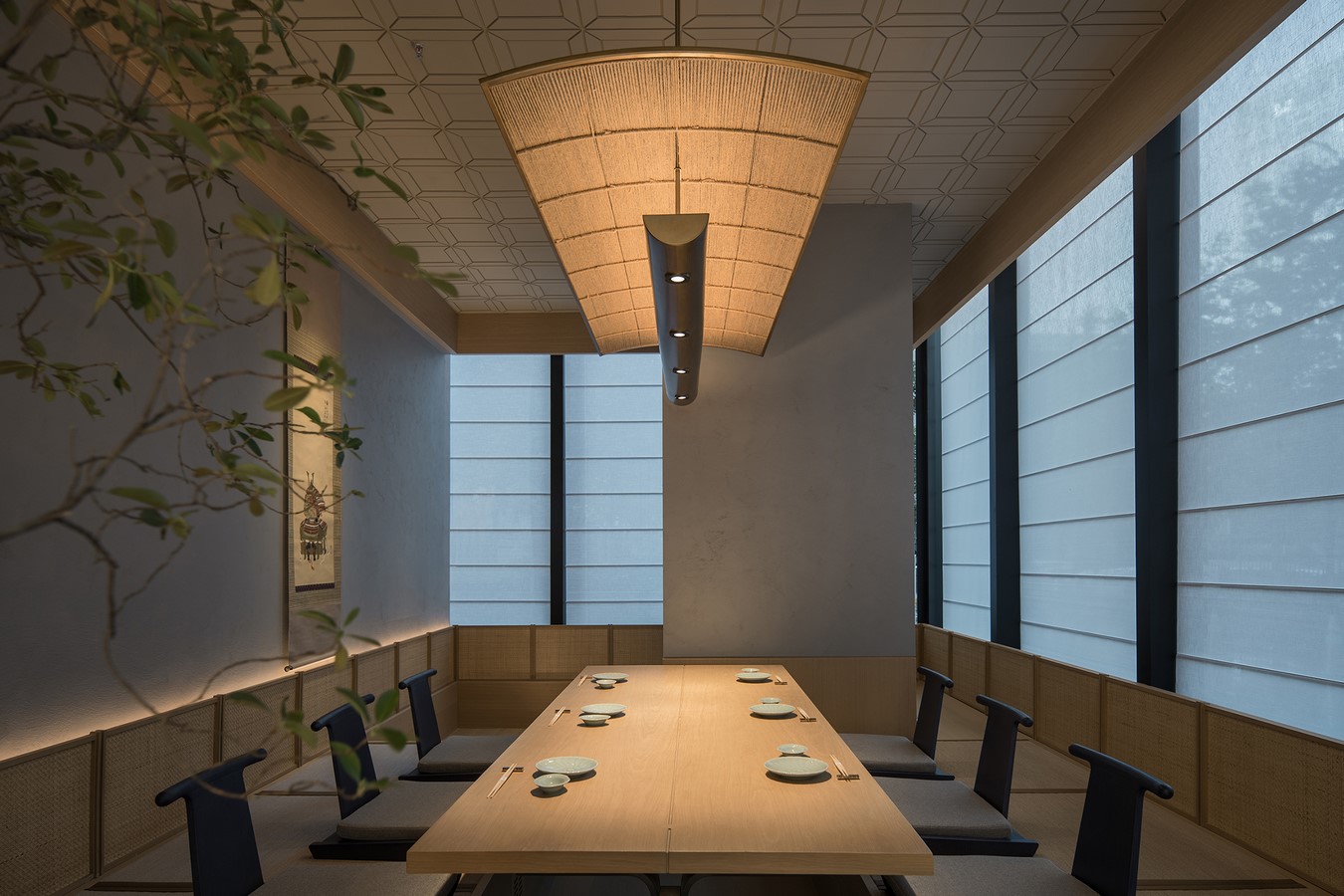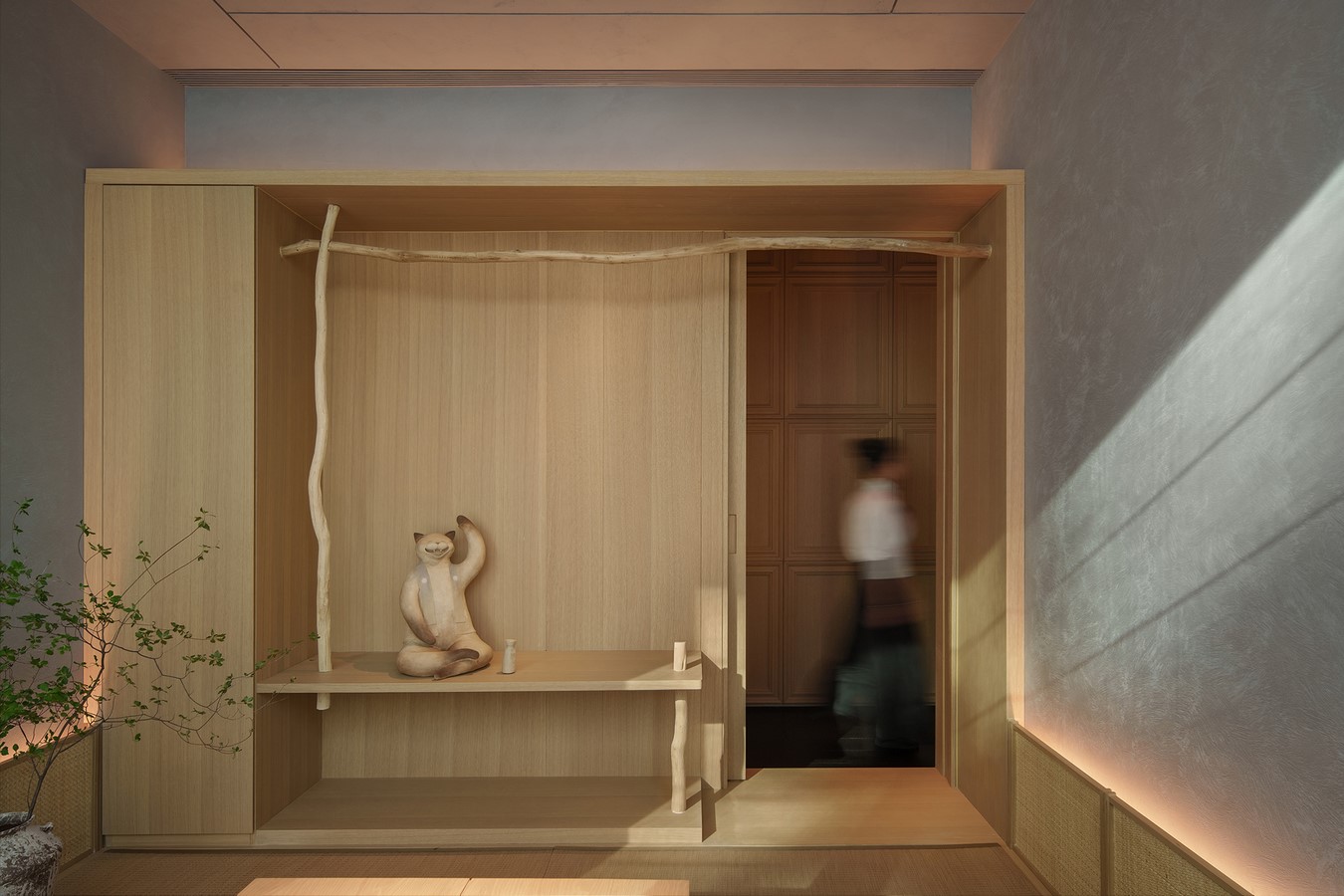Japanese cuisine is renowned for its meticulous attention to taste and ingredients, where the dining experience holds a significant place in Japanese aesthetics. The pinnacle of culinary enjoyment involves the exchange of sensory experiences, blending visual presentation with taste and flavors. The enduring theme of aesthetic living is formed by the fusion of tastes and colors.
Project Name: Aumann Japanese Cuisine Project
Location: 1st Floor, Building B, IFC International Financial Center, Jianguomen Outer Main St. Beijing, China
Project Area: 292㎡
Design Time: July 2022
Completion Time: May 2023
Design Company: FUNUN LAB (www.fununlab.com)
Chief Designer: Fan Jie
Design Team: Du Xiaobo, Guan Qijia, Wang Nong
Lighting Design: Uniimport
Construction Company: Huazhuang Brothers (Beijing) Decoration Engineering Co., LTD Photography: ICY CYWORKS
FUNUN LAB|Aumann Japanese Cuisine: A Fresh Perspective on Spatial Aesthetics Rooted in Japanese Monoaware Culture

Aumann, particularly celebrated for its grilled Eel rice, stands out as one of the capital’s most famous dishes. The head chef trained under Itoh Chū, a master of grilled crab. Aumann’s culinary tradition follows the Kansai grilling technique, emphasizing ingredient freshness and meticulous flavor interpretation. The designer’s objective is to craft a “here-and-now” context based on space, allowing diners not only to savor authentic delicacies but also to immerse themselves in the genuine local culture as if physically present.
Rooted in this dish, the journey traces back to Kyoto, the heart of Kansai culture. Drawing inspiration from shrines, temples, gardens, and paintings of this ancient capital with a millennium-long history, the designer melds these cultural icons with the essence of the cuisine brand. The result is a distinctive space seamlessly integrating food and culture through spatial structure, materials, and scenes.
The Scenic Context
To enable diners to fully engage in this culinary art intertwined with time, the designer incorporates the traditional Japanese architecture concept of “Teioku ichinyo” in the landscaping of the public space. The delicate balance of proportions between the courtyard and the building is altered, making the relationship between guests and the environment the primary spatial thread, providing a flowing experience.
Entering the expansive lobby, diners will notice a meticulously crafted golden installation hanging from the ceiling, reminiscent of the reflection of Kinkaku-ji in the water. Crafted using Kyoto’s traditional gold forging technique, the design exudes an antique style endowed with natural textures. Rather than a direct restoration of the cultural icon, the design presents a contemporary silhouette formed by minimalistic lines. With just a few strokes, it evokes a serene and ethereal atmosphere, akin to a breeze from the wilderness, swaying branches, and the scent of moist moss all converging in the space.

Guests can closely observe chefs grilling eel and cooking on the portable hearth in the open kitchen, situated parallel to the lobby on the opposite end. This creates an intriguing intertextual relationship with the artistic installation in the lobby. Craftsmen refine the taste of top-notch cuisine primarily through fire, reminiscent of the beauty of Kinkaku-ji. As the dish nears completion, its aroma collides and connects, intertwining and ultimately resonating throughout the entire area.
The Physical Context
Inspired by the intricate street patterns of Kyoto’s alleyways, the space designer completes the spatial layout. Connecting different dining scenes, ranging from open to intimate, the design mirrors the flow of traffic space, creating a rhythmic ebb and flow, sometimes light and lively, and at other times relaxing and stretching. The width of the walkways is precisely controlled to allow comfortable solitary passage or cozy side-by-side movement, paying homage to the ambiguous and mysterious beauty of “yūgen.”
The dining space in CBD, Beijing, is ensconced by a bamboo forest, creating a secluded realm temporarily detached from the outside world. The hustle and bustle of busy streets are left behind in the courtyard. Within the dim and shadowy interior, meticulously grilled premium ingredients, paired with secret dipping sauces, release their flavors, allowing epicureans to transcend geographical and cultural boundaries, reaching the pinnacle of taste sensation.
The Mental Context
In terms of spatial decoration, the designer eschews a direct replication or imitation of traditional Japanese residential architectural language. Instead, the aim is to simplify and convey the spirit of traditional Japanese aesthetics through a more modern design language. This approach is evident in the array-style entrance and the vertical wooden lattice within the interior.
Adorning the space are sculptures reflecting the designer’s restrained yet playful approach. A stack of five Daruma dolls becomes the focal point at the end of the corridor. Daruma, one of Japan’s most popular auspicious symbols, possesses an endearing and whimsical appearance resembling a drunken figure in an irregular form. Introducing such an image breaks the monotony and seriousness of the corridor, bringing a sense of relaxation akin to a gentle breeze passing through the space.
Sculptures custom-made for the private dining rooms depict cats frolicking and enjoying drinks in the rural fields of Kansai. With their childlike charm and simplicity, they traverse space and time, instantly transporting people from a high-end culinary restaurant back to the humble and nuanced moments of day and night.
The space incorporates various elements related to “paper,” infusing the facades with vitality and breathability. In the lobby, original wallpapers inspired by traditional Japanese patterns and motifs set the overall ambiance. The translucent DuPont paper used in the private dining rooms, paired with foreground plants, exudes an elegance reminiscent of Yamamoto Baiitsu’s ink scroll paintings. Beyond the window lies a bustling city scene, while indoors, a tranquil ambiance with sparse shadows allows for a natural transition between distant and intimate spaces, creating a delicately layered layout within a confined area.

The concept of “monoaware” is a core Japanese idea, widely applied in art, literature, and various aspects of life. It encourages people to attentively observe and experience things in their daily lives, enriching their inner world through the expression of emotions and resonance.
In this place, individuals can connect with a profound understanding of the vast world through the objective objects before their eyes. As time passes, they can genuinely appreciate the beauty of the space and marvel at the purity of the food’s essence. This is precisely the essence the designer aims to convey in the space.





















